Just when markets thought the inflation was behind us a new situation shows up and derails the stability of forward projections. In case you are wondering, why this Red Sea situation is important and why should one care about it if dealing with markets this article should summarize it quickly. Markets currently do not care much about it, as there has been no reaction neither in equities nor bonds (except slight oil move higher). For a simple reason, this just like the 2020 covid situation is a slowly cooking event that will show up in inflation only over time. And markets will react only then.
Or to be even more precise, the time when markets should react to this Red Sea/Suez development is when J.Powell starts to mention it in FOMC statements and speeches via inflation projections. Inflation indexes (CPI/PPI) starting to move higher once again, derailing projections for rate cuts next year. That is when markets are most likely to react, which is likely few months from here.
Now for you and me as market participants, it helps a lot to see this in advance, to see what’s around the corner before markets start to price this in. Supply chain issues and inflation creation are not very well understood by most people who deal with the markets so it shouldn’t be surprising why such a muted reaction for now (or in late 2020). Keep this in mind as a reference, 2020 lockdowns of global supply chains, shipping ports, and huge lines of ships stuck in front of every major global port were not a story to worry about for markets at all. For almost a year. And then all of a sudden it became THE key story that dragged the bond and equity markets down. It’s because only a year later CPI indexes and J.Powell reacted to what initially caused the inflation rise. Inflation ignition events have lag that is the key takeaway.
I have written plenty on prior articles about how this decade will be very inflationary and will most likely be a replication of the 1970s. The main reason why that is, might be because of a higher cluster of proxy conflicts that could happen between key challenging countries within each side of the alience: US – Russia/China/Iran. The nearby regional countries are likely to be used by both of those alliance blocks and weaponized against each other to drain the military resources of opponents. All of which if happens near key trade routes it can be very inflationary. Which Red Sea and Suez canal obviously fits the bill.
Let’s break down some highlights from a prior article on 4th turning:

As one can see from the inserts above from the older article, we are moving along the expected path. More proxy conflicts, and not just that, specifically: sabotages on global trade routes.
Geopolitical events in terms of proxy conflicts that are limited to small economies in emerging markets might not be that problematic over the long run for the global economy. But if they spring around key trade global routes such as the current Red Sea development, that is completely another type of situation. As implications become severe to global trade and therefore inflation. For example, Azerbaijan, Syria, Venezuela, or similar economies leave typically smaller footprints on the global economy if escalations or rebellions happen within the country. But the same small scale of a country such as Yemen can be a much bigger issue simply because it is located at the “right place” where the key artery of global trade goes by. Location matters a lot, it’s not really about the size of the country or the size of its army. Even a small nation with rebel/pirate forces can leave a significant footprint on the global economy if key supply chains are struck that blockade 20% of global trade cargo to be re-routed into the much longer path.

Nasser and 1956 Suez Canal closing
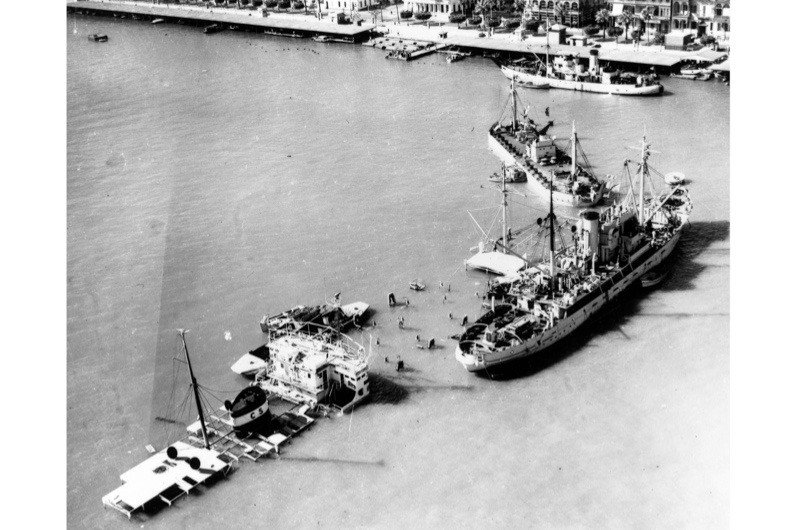
To understand the development around the Red Sea it is necessary to highlight how Nasser in Egypt back in mid mid-20th century and the earlier stages of the cold war used the Suez Canal as the similar trade-blockade route that currently we see Yemenis using. The only difference is that one blockade happened on the north of the Red Sea and this time it is happening on the south side of the Red Sea, but the consequences are likely to be the same.
Although the duration of the event was limited in its intensity back in the 1950s and lasted 1 year (1956-57), the prolonged phase lasted longer and left a longer-lasting inflationary print on the global economy than just a year.
If we assume that the current conflict and sabotage on the shipping route lasts the same, the consequences are even higher for inflation, since we live in a much more entangled economy now than 50 years ago. Blocking a major shipping route that represents 20% of the total passage of global trade is not a joke. The long-term consequences of inflation cannot be understated.
Remember that the 1956 Suez crisis was linked to Israeli events. The 2023 Red Sea crisis is linked to Israel events. The reason in my view why we should expect replication in terms of consequences on regional instability and global supply chains is because similar actors are involved but most importantly just as the 1956 Suez crisis quickly became not about Nasser-Israel but it spiraled into something more than just that, the same we can see currently happening for Yemeni-Israel situation. Although Yemeni forces have initially proclaimed that their targets are Israeli ships that go through the Red Sea, that is no longer the case. Yemeni Houthis are attacking pretty much any vessel from any country. It is all out of sabotage on global supply chains. Which draws plenty of similarities to the prior 1956 situation. Hence it matters for projections twofold:
-it could lead to further regional escalation (Iran proxy involvement)
-it will lead to inflationary costs just as the prior event did (using word “will” and not “might” because that is a done deal, its not just a possibility)
-it will not be resolved within a few weeks, prolonged multi-month or more duration (most wars or proxy conflicts dont end up in few weeks. Even Gaza situation is lasting more than that and most of population involved is civilian let alone in Yemen where there is plenty of guerilla fight capacity)
All of the above are key takeaways on how this is likely to impact markets going further, with one summary: more inflation.
Yemen civil war and installation of proxy forces by outside super-powers

To not spend too much time on the background of the civil war in Yemen, have attached a quick summary on the above link.
This is the background which has created presence of rebel proxy forces in the country, similar to what happened in Syria with sudden appearance of ISIS. Just like with Syria those proxy forces are financed from the outside. This is why one shouldnt be thinking about Yemeni state operations or seeking for diplomacy in current situation since there are two heads to the snake, making body disfunctional.
Can the engagement of a global navy led by the US coalition fix the problem?
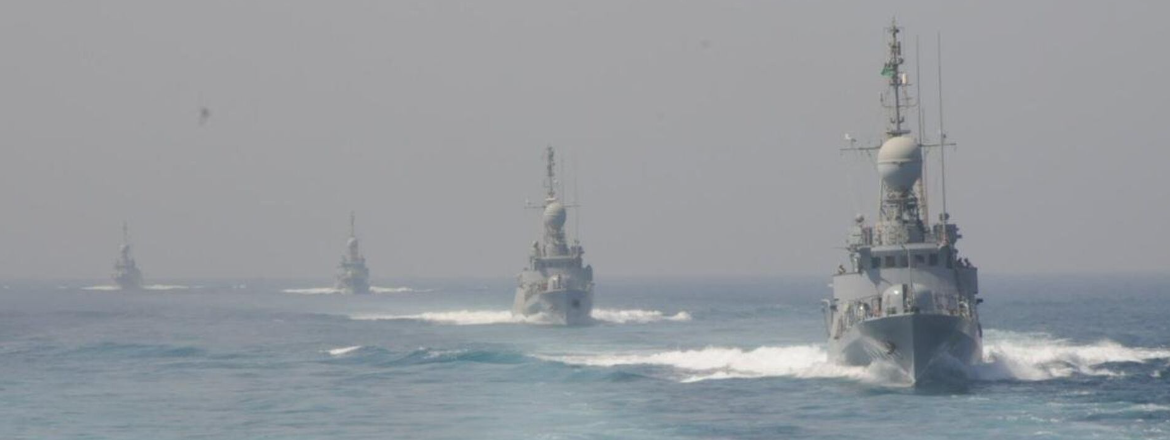
While we do not have a magic bullet answer to this question, there are some historical extrapolations we can make to get on the side of probabilities:
Duration. Proxy conflicts do not end “overnight” once they start. (Do you remember US military experts calling for the Ukraine proxy war to end within a few weeks? Yeah, they were quite wrong, weren’t they? That’s what happens to almost any war in history, major underestimation of duration.)
It is likely that these Yemeni strikes on shipping routes last for several months at minimum and more likely more than a year. Any escalation that follows if the US-led navy coalition decides to strike against Yemen is going to make things worse potentially because it could start to involve Iran (as Iran could aid Yemeni forces via support). Which would open up the scale of conflict and prolong the duration. Yemen strategically and structurally as the country has some similarities with Afghanistan in the sense that is not an easy country to control or take over quickly due to the nature of how much of the country wraps around the Red Sea passage it also makes attacks on ships from 100 of different attack vectors very likely, even if navy coalition decides to engage with country via a direct conflict.
Additionally what matters even more is that if there were to be any escalation of this US-led navy coalition, it is as if commercial shipping companies would be eager to send their ships through such an area. The more the situation escalates the more war-premium insurances jump higher, the higher the cost, and the more likely actually it is that some ships get sunk even while there is plenty of navy presence in the region. As said, there are 100 attack vectors that Yemeni proxy forces can use to eventually hit the ships through the entire stretch of the country and shore which is difficult to control completely by navy. Each ship is often very costly and can carry cargo on average of 100 mil USD excluding the ship value itself. To lose one is not small thing for those companies. So it doesnt take to hit or sink many ships before entire shipping industry starts to panic and re-route the cargo, which is exactly whats taking place currently. We have seen most of major shipping companies already re-routing cargo in past few days over the South Africa. Which is much lengthier and less cost effective way.
On picture below the stretch that Yemeni forces could use to attack cargo vessels.
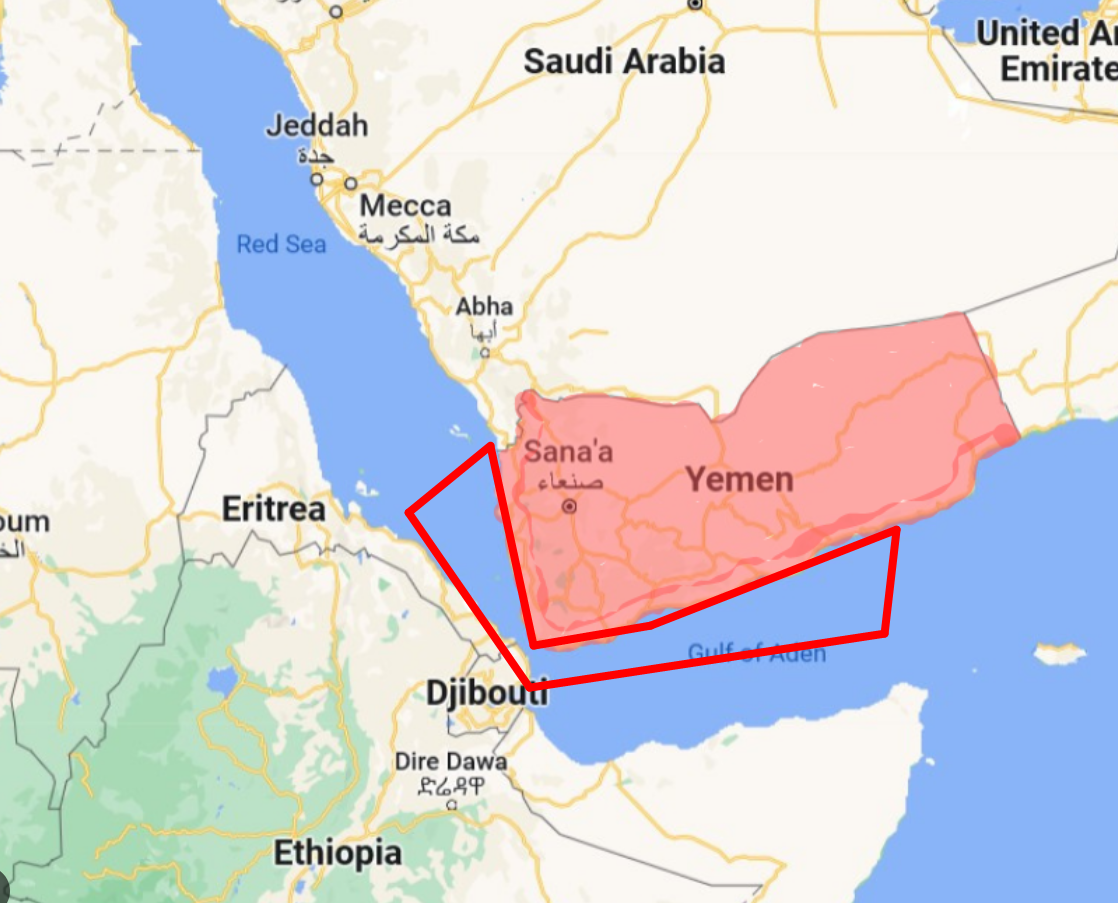
The navy coalition can either make things worse by escalating, which eventually creates higher regional involvement of Iran and increasing aggression of Yemenis attacks on ships in the region. And even if such a navy coalition was to win eventually it would still leave months or years of inflationary print on the global economy as it would ensure that no commercial shipping vessel would dare to go through Red Sea passage anymore for a year or more. Or if some still do, the insurance premiums and costs would jump so much that it would add to the costs of shipping the goods, which only a few companies might be able to afford.
So the solution is to not do anything about it, and somehow accept the fact that every X ship might get struck with a rocket some of which might be sunk, while letting 80% of ships go through the Red Sea. That is solution one, eat the costs both on the capital and human loss side. Obviously, since commercial shipping companies are about profits primarily, that makes little sense. It’s not acceptable to have a 10% chance of losing a ship going through the passage, so they would just re-route via Africa. Which is what they are doing as of right now.
Solution two is a high escalation of the navy near Yemeni waters or even perhaps on Yemeni ground itself. Again that has been already outlined above on how it would not fix supply chain issues in the short run. It will lead to chaos and commercial shipping vessels would likely avoid going through the Red Sea altogether.
The lengthy Africa route (15 days extra to ship the goods)

While some have highlighted that the main takeaway is that African re-route going through Cape of Good Hope is that there will be an increase in shipping time for approx 15 days in each direction. 15 days extra to bring goods from Asia to Europe for example and 15 days extra to bring goods back from Europe to Asia. So in total about roughly a month of increase. But that is not the end of the story. We have to think about long-term consequences.
This route decreases the total shipping turns that companies will be able to do on yearly basis, decreasing from 5 routes per year down to 4. Which will eat into profit margins not just of shipping companies, but every company involved in supply chain and manufacturing production. This means any Chinese company that ships to Europe will deal with lower yearly profits because fewer goods will arrive at the final destination, the retailers/consumers will be paying higher prices because inventories will shrink, and since plenty of oil is also transported through the Red Sea it will elevate energy prices. High energy prices eat into the margin of anything involved with supply chains by default. And that doesn’t even include any scenarios where Iran gets highly involved in the situation, leading to perhaps further sanctions on the global oil trade.
So the long-term effect cannot be understated, and keep in mind, most that deal with markets do not think about this in advance, and will only start to pay attention once CPI index prices in everything that was said above. The words are priced through math and that’s when the market will pay attention. But obviously at that point the “story” won’t matter anymore about what’s happening around Yemen. Because the “Yemen” story will switch headline to “inflation” over a few months, and that market will care about. Equities especially.
2022 Suez canal crisis as “test experiment”
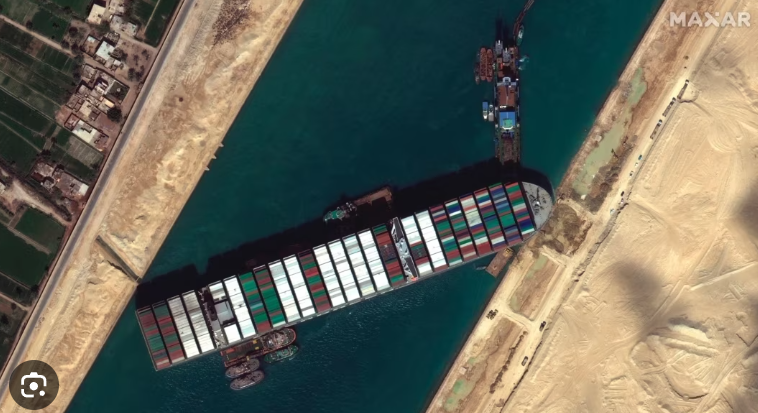
Remember in 2022 when the single ship got stuck in the canal which caused an entire chain of commercial vessels to re-route around Africa? It prolonged shipping times and created unplanned issues for manufacturers in Asia (costs increased, and the Baltic dry index rallied along with transportation costs).
Basically, what that event showed us, was a miniature of the situation we have in play right now with Yemen. And I say miniature because the effects were the same as the ones we will see now, with the exception that it’s not that difficult to get one ship unstuck. Three weeks of hassle and job done. It’s completely another type of situation when a proxy war is disrupting shipping routes as is currently ongoing around Yemen. That situation cannot be fixed within 3 weeks. The duration is most likely much longer. So whatever the effects were from that 2022 Evergreen ship being stuck situation, multiply them several folds to see potential projections for next year. Start with shipping industry and manufacturing reports next year to see the effects. And then what that means going forward for inflation. To put numbers into context:

It’s just a single ship that was able to cause those losses stated above. And this time it’s a small militarily weak nation in the Middle East that can achieve just as much damage, but multiplied by many folds.
Global trade is fragile because of those choke-points (Red Sea) where such a dense area of global trade goes through a narrow passage and that is the shortcut. Whether that’s Suez, Malacca Panama, or Hormuz. Those are the Achilles heels of global trade.
If it isnt bad enough already, add Panama canal issues stack on top
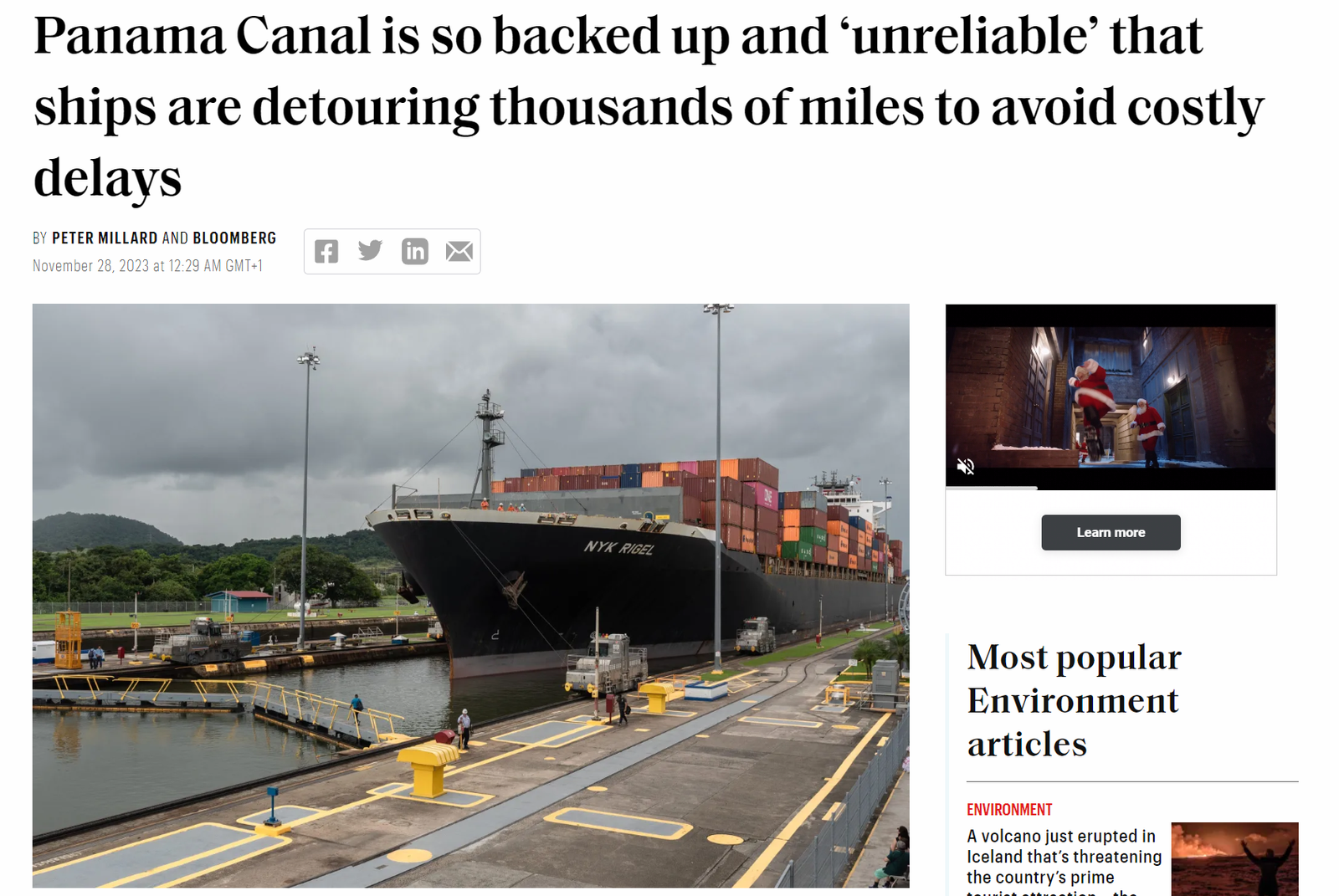
The issue is not just the Red Sea, it’s the fact that Panama is also facing significant water shortages, which have crippled the flow of ships through the ocean since September 2023.
Panama requires huge water capacities to move ships through the canal using the canal mechanism that was built and invented many decades ago. The situation since early December has become so stacked that it created too much uncertainty for shipping companies where the deadlines on when the ship might be able to or might not be able to pass through the canal have become too uncertain. This has pushed some companies to re-route on much longer and more expensive routes because at least there they are under control of delivery timing, basically exactly same as whats happening in Red Sea currently, selecting much lengthier route. This expanded the shipping costs, and is likely to continue ongoing for a few more months at the same time as the Red Sea and Suez Canal is facing the same issue!
The lasting effects of Panama canal issues are projected to last well into 2024:

It’s important to wrap both Panama and Suez/Red Sea into the same basket because they both create global inflationary problems. This isn’t just about trade disruption in one region. It wraps up pretty much the entire global trade, because no matter which ocean/continent one ships to or from there is a good chance you have to go either via Panama or Suez.
The reason why this matters is because the global economy is quite deflationary in nature due to how smooth supply chains are, and that we live in an era where global inventories are always over-filled rather than under-filled for goods especially. This means that if one region has a disruption of trade, somewhere else those shocks can be still absorbed and it doesn’t leave such a large impact on the rise of inflation globally. But when too many such key global trade arteries are choked all at once, there is no buffer to absorb it, and it leads to the elevated rise of global inflation. That is pretty much what the 2020 covid situation was. Because almost all key global shipping ports were stuck with huge waiting lines there was no relief buffer for inflation, and it started to uptick in pretty much all countries, at once.
Above is quite a problematic combination. Having issues in just one canal is bad enough, having both EU and US trade “under siege” means equally having Asian trade under siege. Because both of those canals are basically the arteries of global trade no matter which continent one chooses. That as a result has prolonged inflationary build-up happening.
Behind the shadows, of course, shipping companies will notice it first. Consumers will notice it after a while second. Market participants will notice it third only once central banks see CPI indexes spiking (after consumer notices it). That explains the outcome path.
If you have read my prior article on 4th turning, you know the inflation creation agenda is in play, and the events that are happening are not likely random (both canals getting in trouble at the same time at completely different geographical locations bit unusual eh?). Now someone might ask where is the evidence to support that? Panama issues happened due to random weather events, and the Yemeni situation is random “mad guys” in the Mid-East country going rogue. If you believe in random geopolitical events sure go ahead, that is a very lazy explanation for the many orchestrated events happening globally. How this could be part of such a plan I won’t go into detail for many obvious reasons as that is for everyone to figure out by themselves. Just…follow the rabbit hole. Follow the white rabbit.

Covid 20/21 reference
Using history is always a necessity for any realistic projections in markets. We can use the 2020s situation and strain on global supply chains and global trade to see what results it left on CPI indexes globally. It is important that we measure this until 2022 February when the Ukraine situation starts so that we don’t mix apples with oranges. And that we don’t fall for media propaganda about how entire global inflation was cooked up by a single guy in the Kremlin which is obviously far from the truth. Although Ukraine’s situation did add to global inflation especially on the energy and commodity side no doubt about it, the key core inflation indexes were already rallying strongly in advance due to what happened in 2020 and 21 on the supply chain side.

The above chart illustrates the waiting lines for goods to be shipped globally during the 2020 and 21 situation. And to keep in mind some of those waiting lines have not yet been completely fixed in all sectors. For example, in furniture deliveries, it is still not uncommon to see 3 times as long waiting times in early 2023 as it was normally present in the prior decade. Those supply chain issues typically take a long time to completely fix.
The Red Sea situation will likely lead to the creating of similar strains. Prolonging waiting times on oil shipments (which will lead to elevated oil prices and energy in general) prolonged waiting times on broad goods shipped from Asia (manufacturing), and higher costs to consumers across the board. But obviously, since this article is written from the perspective of financial markets, it will lead to a new rise in inflation. And that’s what will scare markets. Once CPI indexes start to uptick, the FED and other central banks will shift their prior stance of dovishness into hawkishness. And it’s likely markets will get taken by surprise and will not absorb such change positively.
While Suez and Panama were not significantly restricted at that time, the shipping ports globally were. And we can swap one with the other in terms of % of global trade to see approximately what sort of increase in CPI indexes might come about from the current Red Sea/Panama situation. I think it is fair to say that at minimum we look at 1 to 2% of add to CPI if this situation was to be prolonged for a year. This means creating the lift from current CPI of around 3% for the US/EU into 4 or 5% territory once more (excluding any additional variables that are deflationary). That obviously if economy doesnt fall into strong deflation due recession.

Where it matters for markets: The FED shock
So now we get to the main meat of the article, the markets implications. As already written in a few prior articles, breaking down why the bear markets of 2022 and dry markets of 2023 have happened is all “thanks” to inflation. Regardless of what market one is dealing with (since my articles are primarily written for market participants) the inflation and central bank policy responses were the ground 0 for market troubles.
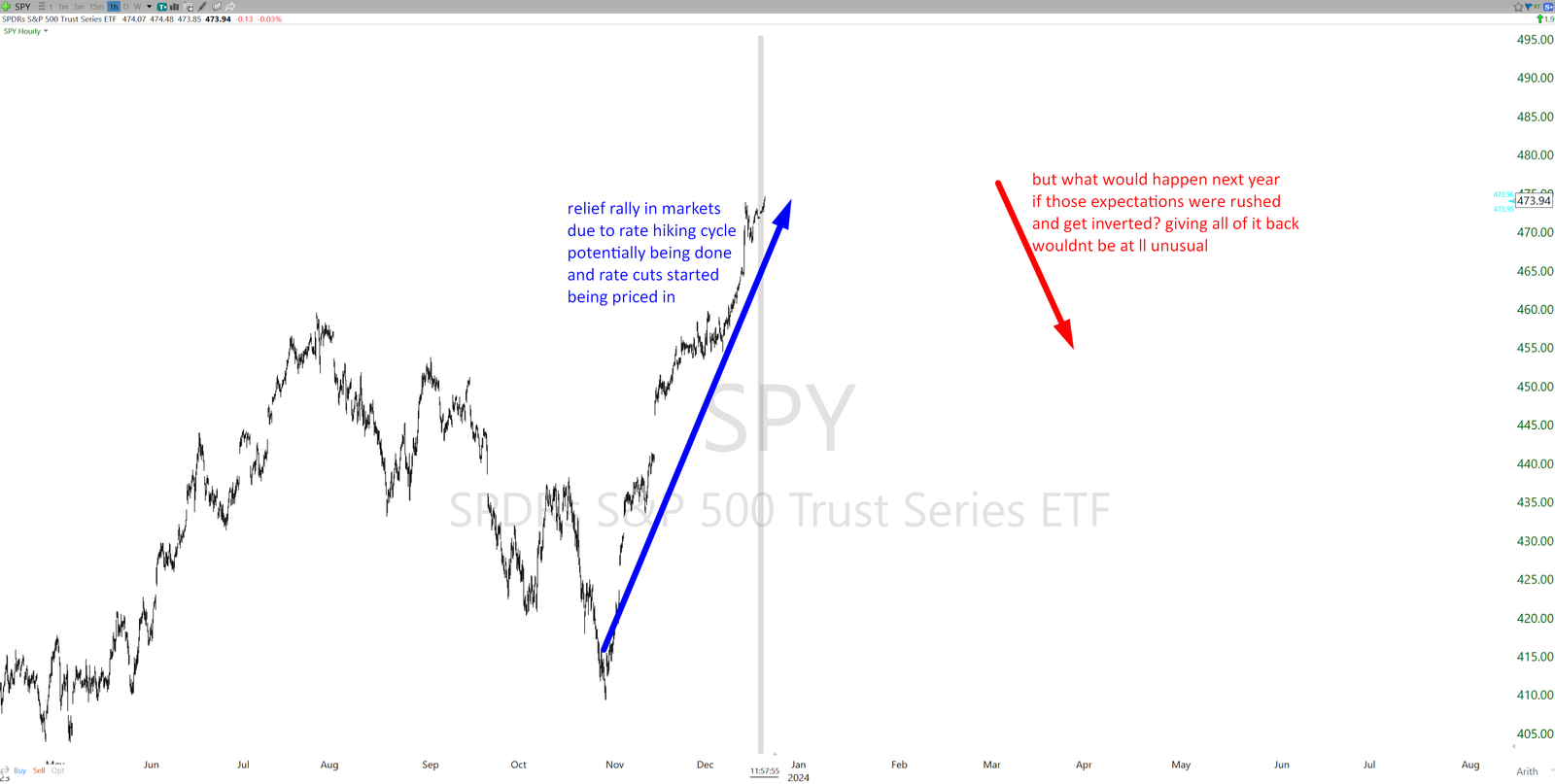
As October and November 2023 approached for first time market started to respond with relief rally because central banks (especially FED) have highlighted that inflation might now be coming under control, CPI indexes slowly inching towards the levels that are more acceptable (under 3%) and for first time FED even has gave some insights about how many rate cuts are planned for next year, assuming that rate hiking cycle is not just done, but will slowly be inverted if inflation is kept in check.
As a result of the above, we have seen a huge rally in global asset prices, equities especially. Markets have literally started to price in advance (as they always do when it comes to interest rates) rate cutting the cycle to some extent, and therefore sending global asset prices somewhat higher.
Now imagine what happens if next year towards the later part of Q1 all of a sudden CPI indexes start to uptick quickly once more, because of the Red Sea shipping blockade. And J.Powell along with FED members starts to change FOMC projections and once again shifts to a very hawkish stance (“We have been too eager projecting rate cuts, we see inflation rising and will not consider any cuts, or might even hike a bit more again by .25 or .50 bp”). If that were to happen which I think is not at all a fictional scenario, it would cause mayhem in markets as the entire November-December-January rally would have to be inverted. It would open the path for significant turmoil in the markets. This is why the current situation matters.
Be aware of lag effect and the typical chain reaction (and why markets aren’t at all panicking yet to current news development around the Red Sea):
1. First surprise event (trade blockade) happens
2. Then what follows is a few months of sustained inflation creation, but mostly not in plain sight. The people who deal with supply chains on a daily basis might recognize early what this will create, but most of the population will not. 2020 is a prime example of that. Early warnings of supply chain experts were ignored by most central banks, market participants, or the broad corporative sector.
3. After a few months CPI indexes start to respond and start to rise. This is when central banks (FED) respond as well by adjusting their projections and statements. Going from dovish to hawkish. This is where it becomes an “oh shit” moment for markets. That’s when markets start to react and no sooner.
4. What follows is the repricing of asset prices due to changed projections of interest rates to the upside, sending markets lower. Repeating 2022 situation.
This way we can break down the chain of events that could happen from this ongoing development in the Red Sea and when to expect the market to react, therefore creating forward plans for the next semi-bear cycle in markets. The timing of which suggests not Q1 2024 but after that. And as well to keep in mind, this development has nothing to do with recession projections. I have written about potential issues for markets in 2024 due to the significant stack of recessionary variables present in global economies and how this could create some decline in markets. This event in Red Sea is an addition to that as it’s not related. It adds to trouble and the likelihood of market turbulence, assuming recessionary forces will remain present next year.
Conclusion

Current developments in the Red Sea bear major implications for global financial markets and the economy. The impact of current developments will not be seen straight away and most market participants will dismiss them until the inflation starts to uptick.
As mentioned in many prior articles I highly believe that we live in a decade of geopolitical turbulence which will impact markets significantly. While I do understand that many do not have any interest in such topics, I am also absolutely convinced that geopolitics and markets cannot be separated in the era we have entered since 2020. It might have been doable between 2000 and 2020 but this decade is the new 4th turning cycle with higher elevation of disruption which markets nor market participants can afford to ignore. It’s helpful to be one step ahead of everyone to prepare in advance.
If what I said above in the article turns out to be true (prolonged multi-month disruption) the events that could likely follow at some point next year will be result of CPI indexes turning higher once more. Think about it this way, a recessionary environment requires the FED and other central banks to cut rates for economy and markets to recover, but raising CPI indexes prevents them from cutting the rates. Which means FED and other central banks might need to hold rates high straight through recession. Not a great combination to see optimal performance of equity markets or bond markets for that matter.


13 thoughts on “Red Sea shipping mayhem – New inflation ignition event”
There were so many fiasco’s reported last year at US airlines. For example, planes almost running into each other, cancellations of flights, fights on flights, etc. Could this be sabotage as well? For whom? How does this benefit the rich? Are they threatening the government? Any thoughts on this or a nothing burger.
If you get my hint in the post i have been semi direct- its planned. I wont go into details by who and how, its slippery ground going there and i dont have yet wishes to see website getting into trouble (not before its really necessary to start hitting some dark truths).
Do you time yourself when providing the estimated reading time? Or is it only the bolded words you use for timing? Or is it an inside joke with yourself? LOl, you must be a speed reader.
hi!,I like your writing so much! share we be in contact more approximately your article on AOL? I need a specialist in this area to resolve my problem. Maybe that is you! Looking ahead to see you.
I appreciate you sharing this blog post. Thanks Again. Cool.
Keep up the fantastic work! Kalorifer Sobası odun, kömür, pelet gibi yakıtlarla çalışan ve ısıtma işlevi gören bir soba türüdür. Kalorifer Sobası içindeki yakıtın yanmasıyla oluşan ısıyı doğrudan çevresine yayar ve aynı zamanda suyun ısınmasını sağlar.
Thank you for the informative post! It was an enjoyable read. I’d love to know more and stay in touch—any chance we could connect?
“This is exactly what I was looking for, thank you!”
شركة Bwer هي أحد الموردين الرئيسيين لموازين الشاحنات ذات الجسور في العراق، حيث تقدم مجموعة كاملة من الحلول لقياس حمولة المركبات بدقة. وتغطي خدماتها كل جانب من جوانب موازين الشاحنات، من تركيب وصيانة موازين الشاحنات إلى المعايرة والإصلاح. تقدم شركة Bwer موازين شاحنات تجارية وموازين شاحنات صناعية وأنظمة موازين جسور محورية، مصممة لتلبية متطلبات التطبيقات الثقيلة. تتضمن موازين الشاحنات الإلكترونية وموازين الشاحنات الرقمية من شركة Bwer تقنية متقدمة، مما يضمن قياسات دقيقة وموثوقة. تم تصميم موازين الشاحنات الثقيلة الخاصة بهم للبيئات الوعرة، مما يجعلها مناسبة للصناعات مثل الخدمات اللوجستية والزراعة والبناء. سواء كنت تبحث عن موازين شاحنات للبيع أو الإيجار أو التأجير، توفر شركة Bwer خيارات مرنة لتناسب احتياجاتك، بما في ذلك أجزاء موازين الشاحنات والملحقات والبرامج لتحسين الأداء. بصفتها شركة مصنعة موثوقة لموازين الشاحنات، تقدم شركة Bwer خدمات معايرة موازين الشاحنات المعتمدة، مما يضمن الامتثال لمعايير الصناعة. تشمل خدماتها فحص موازين الشاحنات والشهادات وخدمات الإصلاح، مما يدعم موثوقية أنظمة موازين الشاحنات الخاصة بك على المدى الطويل. بفضل فريق من الخبراء، تضمن شركة Bwer تركيب وصيانة موازين الشاحنات بسلاسة، مما يحافظ على سير عملياتك بسلاسة. لمزيد من المعلومات حول أسعار موازين الشاحنات، وتكاليف التركيب، أو لمعرفة المزيد عن مجموعة موازين الشاحنات ذات الجسور وغيرها من المنتجات، تفضل بزيارة موقع شركة Bwer على الإنترنت على bwerpipes.com
Bwer Company is a top supplier of weighbridge truck scales in Iraq, providing a complete range of solutions for accurate vehicle load measurement. Their services cover every aspect of truck scales, from truck scale installation and maintenance to calibration and repair. Bwer Company offers commercial truck scales, industrial truck scales, and axle weighbridge systems, tailored to meet the demands of heavy-duty applications. Bwer Company’s electronic truck scales and digital truck scales incorporate advanced technology, ensuring precise and reliable measurements. Their heavy-duty truck scales are engineered for rugged environments, making them suitable for industries such as logistics, agriculture, and construction. Whether you’re looking for truck scales for sale, rental, or lease, Bwer Company provides flexible options to match your needs, including truck scale parts, accessories, and software for enhanced performance. As trusted truck scale manufacturers, Bwer Company offers certified truck scale calibration services, ensuring compliance with industry standards. Their services include truck scale inspection, certification, and repair services, supporting the long-term reliability of your truck scale systems. With a team of experts, Bwer Company ensures seamless truck scale installation and maintenance, keeping your operations running smoothly. For more information on truck scale prices, installation costs, or to learn about their range of weighbridge truck scales and other products, visit Bwer Company’s website at bwerpipes.com.
BWER Company is committed to advancing Iraq’s industrial sector with premium weighbridge systems, tailored designs, and cutting-edge technology to meet the most demanding applications.
Onlayn kazinolar art?q populyar hobbi sah?si olaraq tan?n?r.
Bu gun onlayn istifad?cil?rin genis cesid tapmas? asand?r.
Biz siz? top kazinolar?n siyah?s?n? t?qdim edirik:
– Yaln?z etibarl? platformalar;
– S?xsi t?klifl?r;
– Genis ruletka v? poker.
?n yaxs? seciml?r aras?nda:
– Pinup – moht?s?m bonuslar v? real oyun t?crub?si.
– 1Win – sans oyunlar?n?n liderl?rind?n biri.
– Vulkan – yuks?k keyfiyy?t v? genis oyun cesidi.
Siz d? baslay?n v? ?yl?nc? dolu anlar ?ld? edin!
Повысьте эффективность своего производства с помощью наших приводных устройств! Наши инновационные устройства позволят вам значительно снизить расходы на электроэнергию,
увеличить производительность оборудования и снизить износ механизмов. Благодаря нашиему оборудованию вы сможете значительно увеличить производственные мощности и улучшить качество выпускаемой продукции – [url=https://metallicheckiy-portal.ru/articles/elektro/bloki_upravlenia/kak-vybrat-i-kupit-chastotnyy-preobrazovatel-sovety-ekspertov]купить частотный преобразователь.[/url]